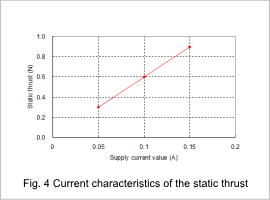Overview
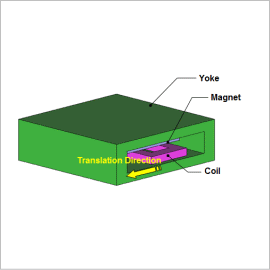
Static thrust variations at the translation position of the actuator have an effect on determining the position accurately. The static thrust is determined by the amount of current, so its current characteristics need to be obtained.
This Application Note explains how to obtain the current characteristics and the translation position characteristics of the static thrust in a voice coil motor, which is a type of coreless linear actuator.
Translation Position Characteristics of Static Thrust
The translation position characteristics of the static thrust at a supply current of 0.05 A are shown in fig. 1. The Lorentz force density distribution and magnetic field distribution of the coil at translation positions of 0 mm and 1 mm are shown in figures 2 and 3.
From fig. 1, it is apparent that the static thrust reaches its peak at a translation position of 1 mm, when the coil is directly beneath each magnetic pole. From fig. 2, it is apparent that the Lorentz force density inside the circle at the translation position of 0 mm is small compared to the translation position of 1 mm. From fig. 3, it is apparent that the magnetic field in the circle at the translation position of 0 mm is weak, and its direction is not perpendicular to the translation direction. Because the direction and size of the current in the coil is constant and the static thrust (Lorentz force) is determined from the strength and direction of the magnetic field, the static thrust is reduced by the magnetic field distribution in the coil.
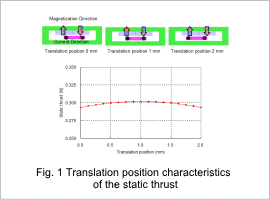
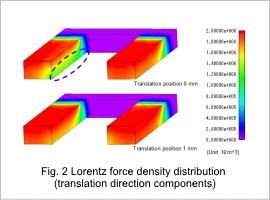
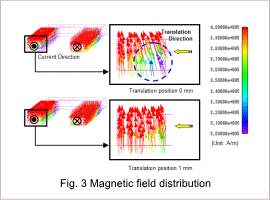
Current Characteristics of Static Thrust
